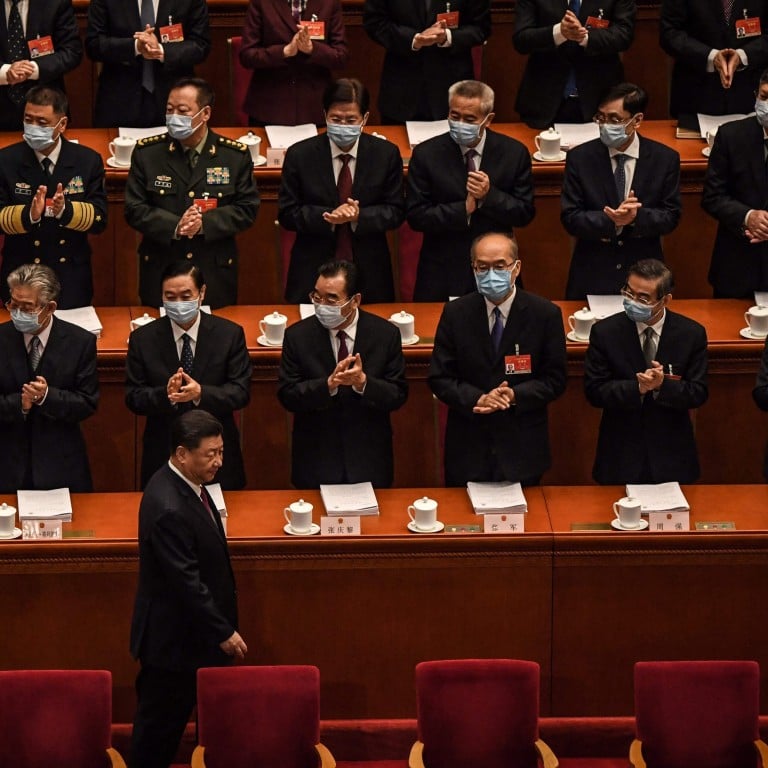
Explainer | Structure of China’s Communist Party: party cells, decision-making process, concentration of power
- All business, social and army units on the ground with three Communist Party members or more must establish a party cell
- The Communist Party has been frank about its ambitions to take control over all aspects of life in China
This is the second in the South China Morning Post’s series of explainers about China’s Communist Party, in the lead-up to the party’s 100th anniversary in July. In this piece, Jane Cai explains how the second-largest political party in the world is structured.
With about 92 million members and nearly 5 million party units across the nation, the Communist Party of China influences and oversees almost every aspect of life in China, from the government to the army, society and business.
To an outsider, the sheer scale of the Communist Party’s influence in China can be mind-boggling.
What is a party cell?
The cells play an important role as “fortresses in battles” for the Party. They have a wide range of duties, including promoting the party’s ideology, informing the public of the party’s policies, implementing decisions from higher levels and organising cadres and non-party members – or the so-called masses – to take part in social work.
At the height of the coronavirus pandemic last year, over 4.6 million party cells went into emergency mode and helped set up quarantine areas in neighbourhoods, take people’s temperature and allocate daily necessities for people in lockdown.
What is the most powerful position in China’s Communist Party?
Party cells also “educate, manage, supervise and serve” party members, ensuring members understand the latest instructions from the top. Another key duty is “membership development”: training young people “from the frontline of production and work” to become party members by helping them study party theories and write applications to join the party.
What is the party’s structure like?
The power structure of the Communist Party may be likened, in a simplistic manner, to the form of a pyramid.
Spread across the country in villages, schools, neighbourhoods, companies and institutes, the party cells are connected by provincial-level committees.
From the members in the party cells, 2,200 delegates are elected into the National Party Congress, which is convened once every five years to represent the 92 million party members across the nation.
The main function of the congress is to elect a Central Committee of about 200 full members and 170 lower-ranking or “alternate” members, most of whom have been men in key posts in the central government, regional party leaders, top military commanders and senior executives in state-owned enterprises.
How are decisions made?
At its core, the Communist Party’s decision-making process is based on the Marxist-Leninist idea of “democratic centralism”.
In theory, democratic centralism simply entails a “democratic and open discussion” on policies within the party followed by a voting process where the majority rules. The result is submitted to a higher level party committee for approval.
Once a decision is made, party members must uphold the agreed-on policies, with the minority subordinate to the majority, lower-level organisations to their superiors, individuals to their party organisations and local party committees to the Central Committee.
China asks Wolf Warriors to find wisdom in Communist Party history
But in reality, there were times when powerful individuals overruled this collective leadership model. The political turmoil caused by the Cultural Revolution from 1966 to 1976 was the result of Chairman Mao Zedong’s anti-institutional impulses and nearly destroyed the country.
How have party organisations evolved under Xi?
However, in recent years, the party’s monopoly on political power and ideology have become entrenched more deeply than before with the full integration of state and party organisations.
Since 2013, a slew of key central policy committees have been set up to oversee economy and finance, comprehensive reforms, foreign affairs, national security, cybersecurity and other sectors. The committees, chaired by Xi and other Politburo Standing Committee members, override the government apparatus and are the ultimate authority in the areas they oversee.
The party has also expanded its footprint in the private sector in recent years. In 2017, it requested “comprehensive party building” in the private sector, urging private companies, including foreign firms and joint-ventures to set up party cells. The cells are supposed to “guide and supervise” companies to abide by laws and regulations and implement the party’s policies.











